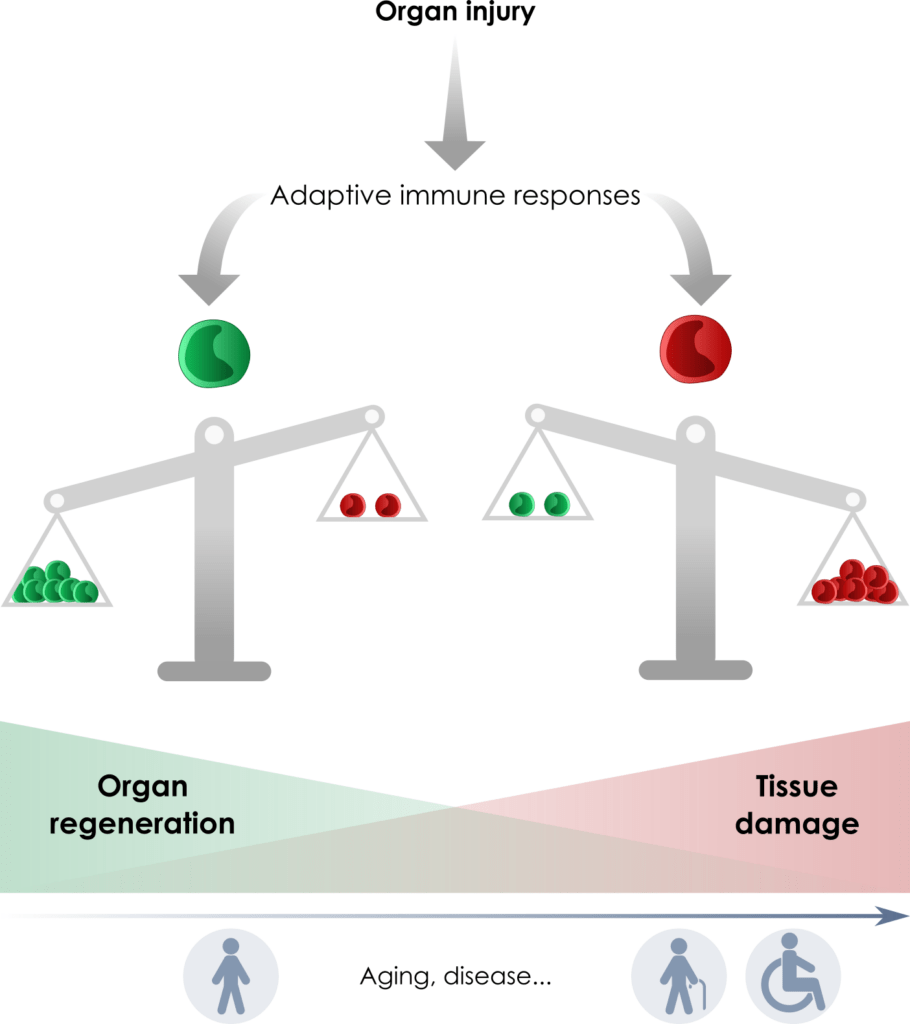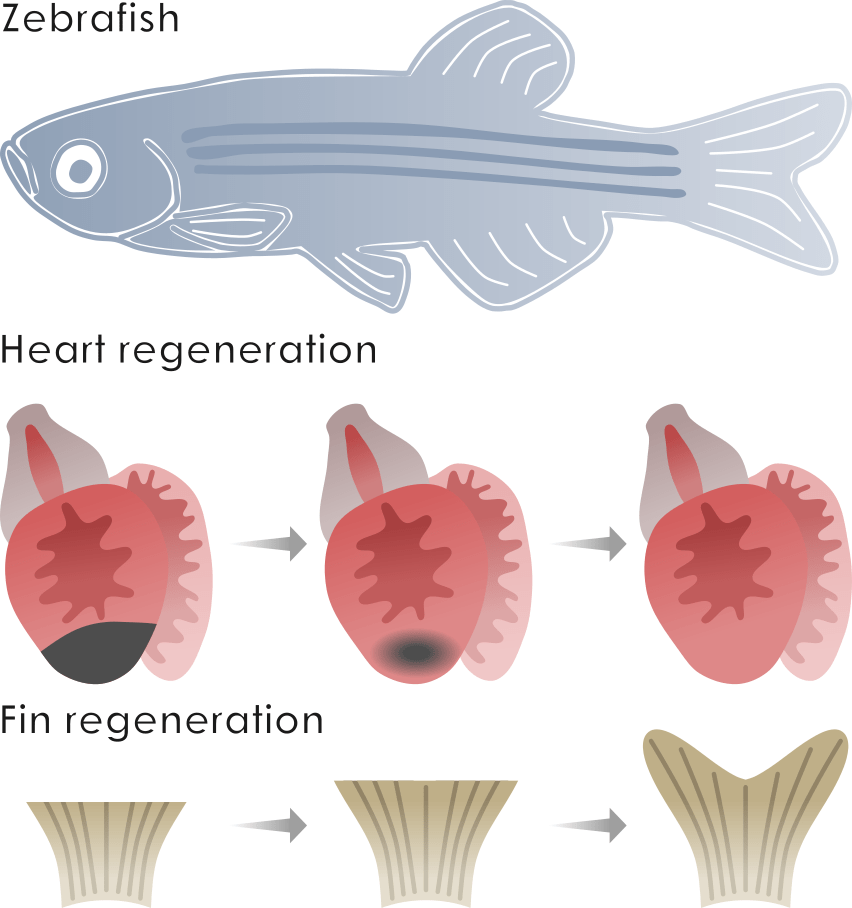REGIMMUNI-T
João Cardeira da Silva
Regenerative and tissue-damage immune responses
The regenerative capacity of human organs is inherently limited, and this ability diminishes progressively with aging as well as during disease, negatively impacting the post-organ injury consequences. For example, upon myocardial infarction, muscle tissue is lost and permanently replaced by scar tissue, leading to the functional decline of the heart. The type, timing, and orchestration of the immune response to injury strongly influence the spectrum of regenerative outcomes post-organ injury. In particular, the adaptive immune system, with T cells as key regulators, exerts significant influence over the delicate balance between organ regeneration or tissue damage. While adverse adaptive immune responses lead to poor regenerative outcomes, beneficial ones are needed to stimulate regenerative programs, and the balance between such responses varies throughout life. Moreover, the memory properties and adaptive nature of this type of immunity make it a unique and promising platform to be harnessed for immunomodulation strategies towards sustaining organ regeneration.
In contrast to mammals, fish species, such as the zebrafish, hold an incredible capacity to regenerate multiple organs, including the heart and the fin, making them excellent models to understand the cellular and molecular mechanisms underlying organ regeneration. In addition, zebrafish offer unique advantages due to their amenability for genome editing, facilitating the generation of essential tailored genetic tools to study organ regeneration.


The global hypothesis of REGIMMUNI-T is that the balanced activities between beneficial (i.e., regenerative) and detrimental (i.e., tissue-damage) adaptive immune responses define the post-organ injury outcomes.
Taking advantage of the regenerating zebrafish heart and fin, our goal is to identify and characterize these responses across different levels of regeneration capacity, in health, disease and aging, and identify strategies to modulate the regenerative potential of the mammalian immune system.
RESEARCH AXES
Lorem ipsum dolor sit amet, consectetur adipiscing elit. Ut elit tellus, luctus nec ullamcorper mattis, pulvinar dapibus leo.
Lorem ipsum dolor sit amet, consectetur adipiscing elit. Ut elit tellus, luctus nec ullamcorper mattis, pulvinar dapibus leo.
Lorem ipsum dolor sit amet, consectetur adipiscing elit. Ut elit tellus, luctus nec ullamcorper mattis, pulvinar dapibus leo.
Publications
- Cardeira-da-Silva J#, Wang Q, Sagvekar P, Mintcheva J, Latting S, Günther S, Ramadass R, Yekelchyk M, Preussner J, Looso M, Junker JP, Stainier DYR#. Antigen presentation plays positive roles in the regenerative response to cardiac injury in zebrafish. Nat Commun. 2024, 15:3637.
- Cardeira-da-Silva J*#, Bensimon-Brito A*, Tarasco M, Brandão AS, Rosa JT, Borbinha J, Almeida PJ, Jacinto A, Cancela ML, Gavaia PJ, Stainier DYR, Laizé V#. Fin ray branching is defined by TRAP+ osteolytic tubules in zebrafish. Proc Nat Acad Sci USA. 2022, 119:e2209231119.
- Bensimon-Brito A#, Boezio GLM, Cardeira-da-Silva J, Wietelmann A, Ramkumar S, Lundegaard PR, Helker CSM, Ramadass R, Piesker J, Nauerth A, Mueller C, Stainier DYR#. Integration of multiple imaging platforms to uncover cardiovascular defects in adult zebrafish. Cardiovasc Res. 2021, cvab310.
- Tarasco M, Gavaia PJ, Bensimon-Brito A, Cardeira-da-Silva J, Ramkumar S, Cordelières FP, Günther S, Bebianno MJ, Stainier DYR, Cancela ML, Laizé V#. New insights into benzo[alpha]pyrene osteotoxicity in zebrafish. Ecotox Environ Safe. 2021, 226:112838.
- Cardeira J, Gavaia PJ, Fernández I, Cengiz IF, Moreira-Silva J, Oliveira JM, Reis RL, Cancela ML, Laizé V#. Quantitative assessment of the regenerative and mineralogenic performances of the zebrafish caudal fin. Sci Rep. 2016, 6:39191.
- Bensimon-Brito A*#, Cardeira J*, Dionísio G, Witten PE, Cancela ML. Revisiting in vivo staining with alizarin red S – a valuable approach to analyse zebrafish skeletal mineralization during development and regeneration. BMC Dev Biol. 2016, 16:2.






